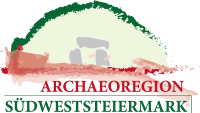The Coin Cabinet of the Joanneum Universal Museum in Eggenberg Palace tells memorable stories of coins from Styria – from the Panther Thaler of the Graz Mint to the fuzzy-headed coin type of the Celts, from the gold coin from Flavia Solva that was reworked into a piece of jewelry up to the Renaissance medal of Archduke Charles II of Inner Austria.
The presentation elaborates the focal points of the collection’s holdings and draws inspiration from its location. The stage for the new coin cabinet is set by two rooms in the oldest part of Eggenberg Palace, the 15th-century predecessor of the princely residence.
The “Balthasar Eggenberger” room
The exhibition room “Balthasar Eggenberger” – named after its builder, the richest citizen of Graz at the end of the Middle Ages – provides insight into the life of this financial tycoon from the age of early capitalism who laid the foundation for the steep rise of the House of Eggenberg. Starting with the person of Balthasar Eggenberger and his work as mintmaster to Emperor Frederick III, the effects and background of a devastating monetary crisis that hit the people of the Austrian and southern German lands in the second half of the 1450s are described, in which the money in circulation became worth less every day until practically nothing could be bought for it.
The “Hans Ulrich von Eggenberg” room
Under Hans Ulrich von Eggenberg, great-grandson of Balthasar and first minister of Emperor Ferdinand II, construction of the princely residence began in 1625. This extraordinary and highly educated man, who within only a few decades became one of the most influential princes of the Holy Roman Empire, defines the atmosphere of the second room.
The central element of the “Hans Ulrich” room is a large table display case. In this showcase, visitors can use computer-assisted magnifying glasses to retrieve detailed information on individual coins and interactively decipher the information stored in the exhibits on screens connected to the magnifying glasses. The showcase is adorned by two wooden panther figures, which were created in the 18th century and symbolically express the Styrian connection of the coins. The coins in the central showcase provide an overview of Styrian coinage and the circulation of coins in Styria from ancient times to the end of the 18th century. Selected and for the most part excellently preserved pieces from the Graz mint show the achievements of this institution, where from about 1215 until its closure under Maria Theresia coinage was produced for daily payments, and since the 16th century also representative coinage for the sovereign. The most important coin treasures of Styria document their affiliation to a cross-regional and international economic area and are appreciated according to their finding character and composition.
The coin ensembles and series are arranged in the central display case according to chronological, typological and iconographic criteria. The circulation of coins in Styria is presented not only on the basis of selected individual finds, but also with the help of treasure finds, because their composition reflects the tendencies in coin circulation on a synchronous level, taking into account the underlying regularities of the find deposit, and the individual epochs of Styrian coin history are exemplarily manifested in them.
With the final presentation of Hans Ulrich von Eggenberg and the presentation of his coins and medals, the coin cabinet resumes the history of the Eggenbergs begun in the first room and creates a narrative bracket that extends from Balthasar Eggenberger to his great-grandson Hans Ulrich von Eggenberg.
Set Aureus of the Roman Emperor Gordianus III from Flavia Solva
One of the highlights of the coin cabinet is a set Aureus of the Roman Emperor Gordianus III from Flavia Solva, which the Joanneum acquired in 1877 for 16 gulden from the Leibnitz watchmaker Anton Hergg. The precious, very rare piece was found “in the field of the Trattenbauer farmer” in Wagna. It was converted into a piece of jewelry already in ancient times and worn as such.
On the obverse of the coin, we find a youthful portrait of the ruler, surrounded by the words “IMP(erator) GORDIANVS PIVS FEL(ix) AVG(ustus)”: Emperor Gordianus, the pious and fortunate multiplier of the Empire. The title suffix Pius Felix was introduced by Commodus (r. 180-192 A.D.), but had not yet become a conventional word combination in the 3rd century A.D. The attribute Pius is perhaps related to the memory Gordianus III had of the emperors Gordianus I and Gordianus II, who were assassinated in 238 A.D. Gordianus III adopted the epithet Felix after the suppression of a rebellion in North Africa.
The coin’s reverse is decorated with a representation of the sun god Sol, who has raised his right hand in salute and holds his attributes globe and whip in his left. The inscription “AETERNITATI AVG(usti)” (to the eternity of the expander of the empire) ascribes to the emperor a characteristic of the sun god, who in the ancient imagination stood for eternity.
01 April to 31 October
Tue.-Sun. and holidays, 10 a.m. – 5 p.m.
01 November to 31 March closed
but open until 22 December on a guided tour and by appointment
Contact:
Eggenberger Allee 90, A-8020 Graz
T: +43 316 8017 9560, muenzkabinett@museum-joanneum.at
www.museum-joanneum.at/muenzkabinett
Text: Mag. Karl Peitler

